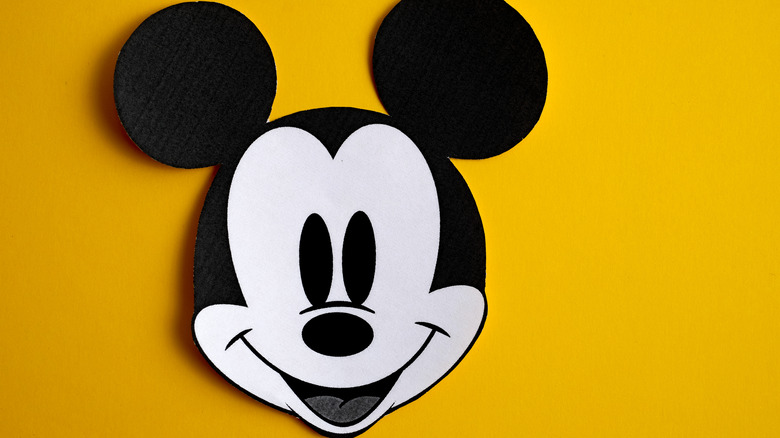The Untold Truth Of Maus
"Maus," the Pulitzer Prize-winning graphic novel by Art Spiegelman, is widely used in school curriculums to teach about the Holocaust. It's based on interviews between Spiegelman and his father, a survivor of a Nazi concentration camp and the Polish ghettos (per Sparknotes). The book depicts the people involved as cartoon animals — Jewish people are portrayed as mice and the Nazis as cats.
But though the book has been widely praised for its thoughtful and precise look at how the trauma of the Holocaust affected Jewish families, in 2022, it became the unlikely subject of a culture war battle when a Tennessee school board voted to remove the book from its school curriculum, even though teachers had planned their entire lesson plan around it (via Haaretz). Spiegelman called the move "Orwellian," but the Tennessee school district doubled down.
This wasn't the first time "Maus" found itself the subject of controversy. In its 30-plus years of existence — the story was first serialized in the '80s and then published in two parts, in 1986 and 1991 (per Britannica) — the graphic novel has been the subject of widespread study and debate, and it might have even inspired a children's movie.
It sparked a curriculum battle
The McMinn County Board of Education in Tennessee voted to ban "Maus" from the 8th-grade curriculum in early 2022, citing swear words, "nudity," and depictions of violence and suicide, per Haaretz. According to NBC News, the nude woman in question is the dead body of Spiegelman's mother, portrayed as a mouse.
But the board of education's reasoning for the decision seemingly went beyond the rationale they claimed. "It shows people hanging," one board member reportedly said, according to Slate. "It shows them killing kids. Why does the educational system promote this kind of stuff?" Spiegelman, speaking to The New York Times, said his impression was that the board members were asking, "Why can't they teach a nicer Holocaust?"
According to The American Library Association's Office for Intellectual Freedom, this banning came at a time when more people were challenging books than at any other time in its history. In 2020 alone, the ALA said, 273 books were challenged, most dealing with race, gender, or sexuality (via NBC News).
It was based on Spiegelman's parents
The story of "Maus" is self-referential and based around real conversations that Spiegelman had with his father, who survived the Auschwitz death camp along with Spiegelman's mother (per Britannica). Spiegelman's mother later committed suicide in 1968, when Art was just 20 and newly home after a stint in a mental hospital (via The New York Times).
The story is largely focused on Spiegelman's father's account of the Holocaust, including the death of most of his family and his first son, Art's older brother (via SchoolWorkHelper). The story also is about Art's relationship with his father as an older man, as Art works on the story of his father's life. It took the younger Spiegelman about a decade to finish "Maus," and by the time he finished, his father had died.
If you or anyone you know is having suicidal thoughts, please call the National Suicide Prevention Lifeline at 1-800-273-TALK (8255).
Spiegelman believed that it inspired An American Tail
In "Maus," Spiegelman portrays different people as different kinds of animals — Jews are mice, Germans are cats, Poles are pigs, and Americans are dogs, according to The New York Times. The idea stemmed from a film class that Spiegelman took in college, in which he learned that early cartoons often portrayed Black Americans as rodents (per SchoolWorkHelper). He considered using the trope to write about racism in America.
"That idea lasted for about 45 minutes," he said. "Because what did I know about Blacks in America? And then suddenly, the idea of Jews as mice just hit me full force, full-blown. Almost as soon as it hit me, I began to recognize the obvious historical antecedents — how Nazis had spoken of Jews as 'vermin,' for example, and plotted their 'extermination.'"
Spiegelman's approach had its roots in books like George Orwell's "Animal Farm" but wasn't without controversy (more on that later). Still, it was influential — in fact, Spiegelman believes that it helped inspire the Steven Spielberg-produced movie "An American Tail," which also portrayed a Jewish family of refugees as mice and their persecutors as cats, per Entertainment Weekly. He didn't sue Spielberg, figuring that claims of theft would be hard to prove, but later said the movie and its sequel," An American Tail: Fievel Goes West," were "cynical, nasty pieces of s***."
It has been controversial internationally
Art Spiegelman's depiction of different ethnic groups as different species was sometimes criticized — Polish cultural groups, for instance, sometimes objected to being portrayed as "pigs" in the work (via American Council for Polish Culture). As for portraying the Jews as mice, he told The New York Times that he wanted to portray the horrible reality of Adolf Hitler's metaphor. To make that clear, he begins the book with a quote from Hitler (via Shmoop): "The Jews are undoubtedly a race, but they are not human."
Other countries have objected to the use of a swastika on the book's famous cover, in which two mice huddle under the Nazi insignia. In 2015, Russia removed the book from stores in advance of its Victory Day celebration, in remembrance of the Soviet defeat of the Nazis during World War II, according to The Christian Science Monitor. Previously, German publishers had objected to the cover, which potentially ran afoul of the country's laws against depicting swastikas. Spiegelman felt so strongly about keeping his original cover, however, that he wrote it into his contract. Eventually, the book was published in Germany with the original cover after its publishers convinced the government that it was a serious work of historical import.
It wasn't the first comic strip about the Holocaust using mice
Oddly enough, Art Spiegelman's story has a precursor in an actual comic book written in the Gurs concentration camp in Nazi-occupied France. "Mickey au Camp de Gurs," by the young cartoonist Horst Rosenthal, depicts Mickey Mouse living in the internment camp and eventually escaping to America by cleverly erasing the drawing of himself (via Boing Boing). Sadly, Rosenthal himself was transferred to Auschwitz, where he was executed immediately upon arrival, according to Lambiek.
In 2012, Spiegelman published "MetaMaus," an analysis of his own earlier work, and wrote about "Mickey au Camp de Gurs" — what he believed was the first-ever comic about the Holocaust. Per HeyAlma, Spiegelman had not heard about Rosenthal's comic when he wrote "Maus," but when he later "stumbled" upon it, he saw it as "another validation that I'd stumbled onto a way of telling that had deep roots."





